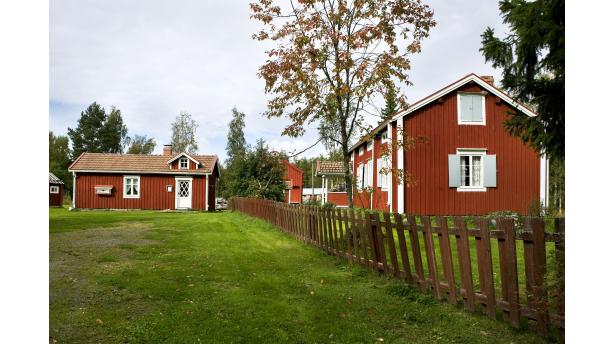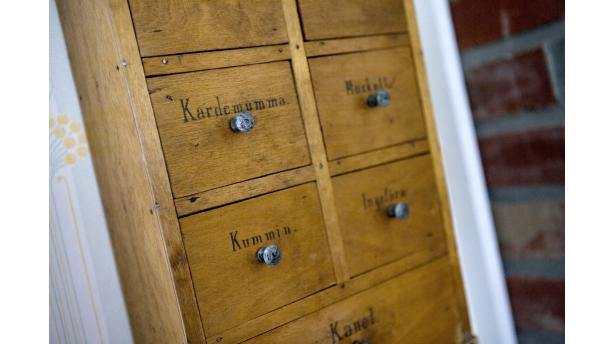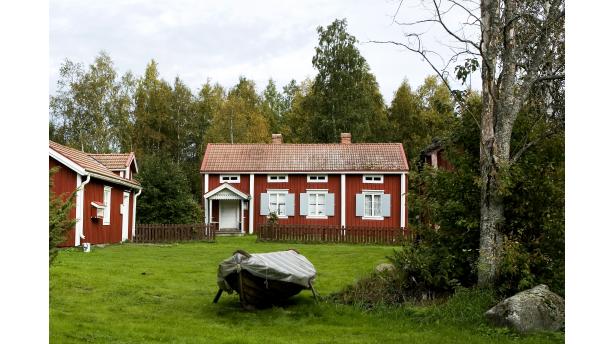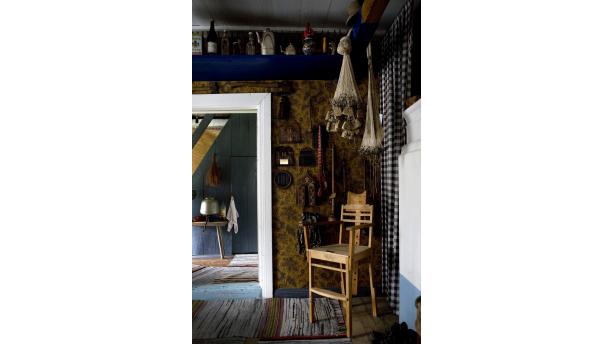Museum A-Ö » The archipelago, fishing and seafaring » Bergö Museum
Bergö Museum




Did you know...
An itinerant dentist visited Bergö once or twice a year, until the first dentist’s chair was attained on the island in the 1950s. It is nowadays displayed in the cottage.
The Bergö islander community is located a short ferry trip from the mainland, and its versatile museum recounts the tale of its earlier inhabitants and old way of life. The visitor gets a feel of the islander life of old times through the ordinary and unusual everyday objects, exotic pots and bottles, self-made snowmobiles and footwear, as well as farming devices and fishing equipment. Many unique, new and old interesting objects can be found here.
The museum was originally a sexton’s house built in 1856. Along with it on the courtyard there was a barn adjoined to the original drawings of the estate. Old buildings, for instance a fish cottage from the 1850s and a traditional timber barn with a straw and cane roof, have been moved to the courtyard later. Horticulture with pigs, chickens, sheep and horses was also an essential part of the islander life.The sexton’s house was built for the first sexton Johan Erik Munck. His successor in 1866 was Benjamin Molander, whose daughter Maria, also called aunt Mari, began to take care of the farm in the beginning of the 20th century. Maria Molander trained to be a midwife in Helsinki and after that returned to Bergö. In her later life in 1942 she donated the estate to an antiquarian society, which was established especially for the receiving of the donation. There is some of Maria’s property in the collection, for instance a midwife’s bag, sealskin shoes, which she only wore for festive occasions, and a petite spice cabinet, that still smells of cinnamon.
Because Bergö is an island village, the proximity of the sea and its treasures can be seen in the museum. Here you can find most of the items needed in an islander home: a bullet gun, a seal net, sealskin shoes, sealskin sack, a duffel bag from the 19th century, skates, a pilot flag, a pilot bag, binoculars and even an American trunk covered with sealskin. One of the pearls of the museum is an old wooden stick compass, of which there are likely to be only 2 or 3 copies in Finland. Objects rescued from the nearby shipwrecks, such as a foghorn and a life vest from the passenger ship Westkusten, which sank in 1913, serve as evidence of the dangers of the sea.
Another pearl of the museum is a collection of different kinds of headwear, which includes top hats and women’s, school teacher’s, vicar’s, police officer’s, pilot’s and Finnish White Guard’s hats. In the garment department it is also possible to get acquainted with the Bergö regional dress and the uniforms of a lighthouse keeper, pilot and police officer. The rarity of the collection is the Jäger battalion uniform, which belonged to Leander West. Three men travelled from Bergö to Germany for the Jäger training during World War I.
Among the oldest objects in the museum can be mentioned the slicer from the year 1691, and one of the most interesting items is an ingeniously designed homemade mousetrap. Many artefacts, such as the coffee cups dating back to the time of the Russian rule and the portrait of the Russian empress, which preferably had to be displayed in every household of the period, tell about Finland’s history.
In one of the outbuildings can be seen the predecessor of the snowmobile, which Lennart Back had constructed during the war. He had seen some Russians drive similar curios on Lake Ladoga, and asked a smith from Malax to build him a sled with a motor. Soon other people from Bergö followed suit, and still in the 1970s the islanders were driving their homemade snowmobiles.
Titanic exhibition in summer 2024



